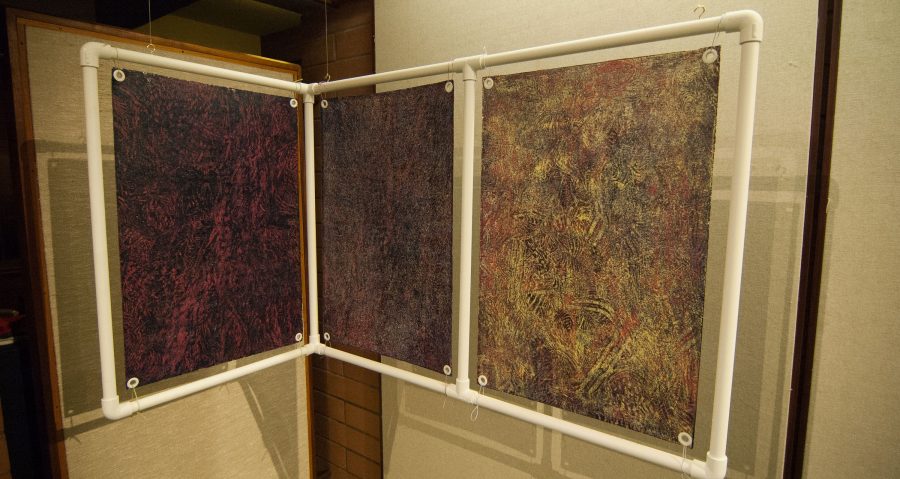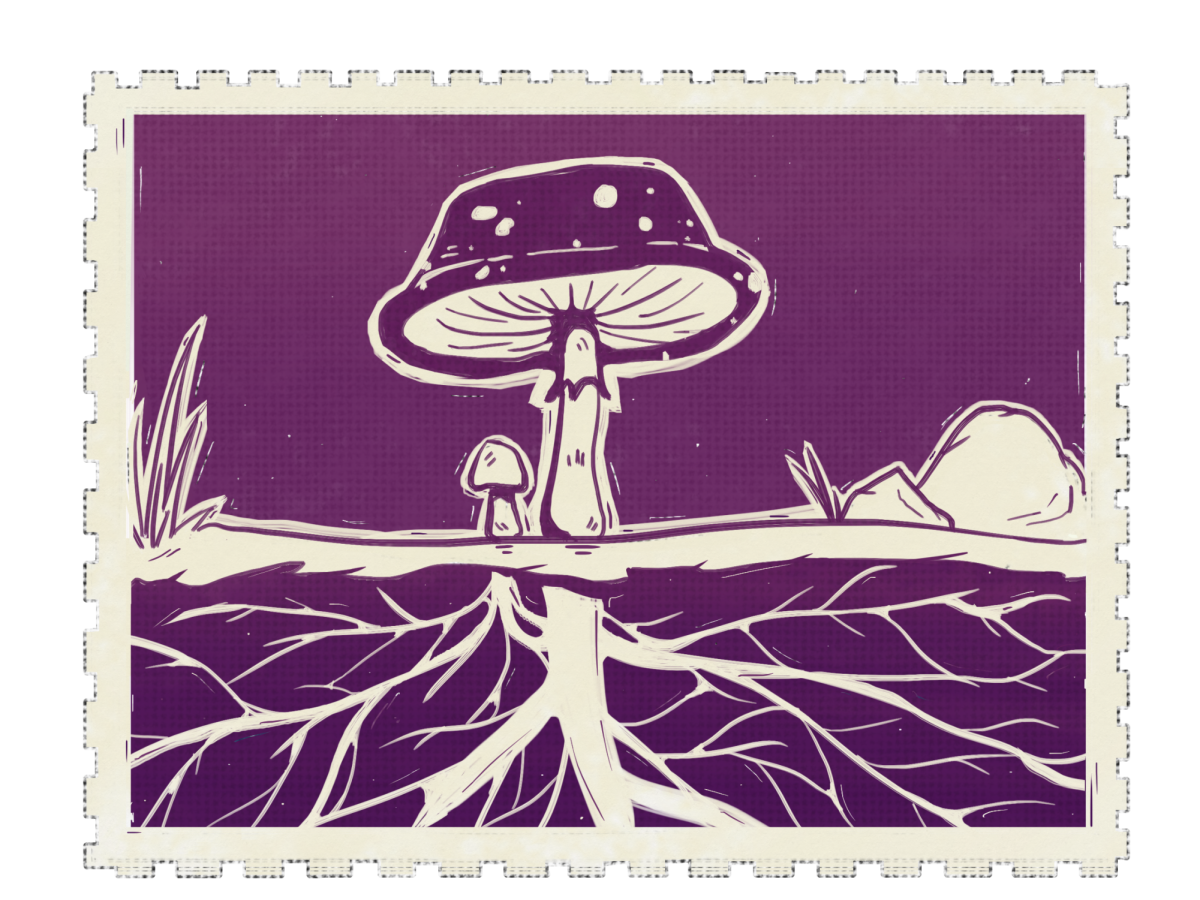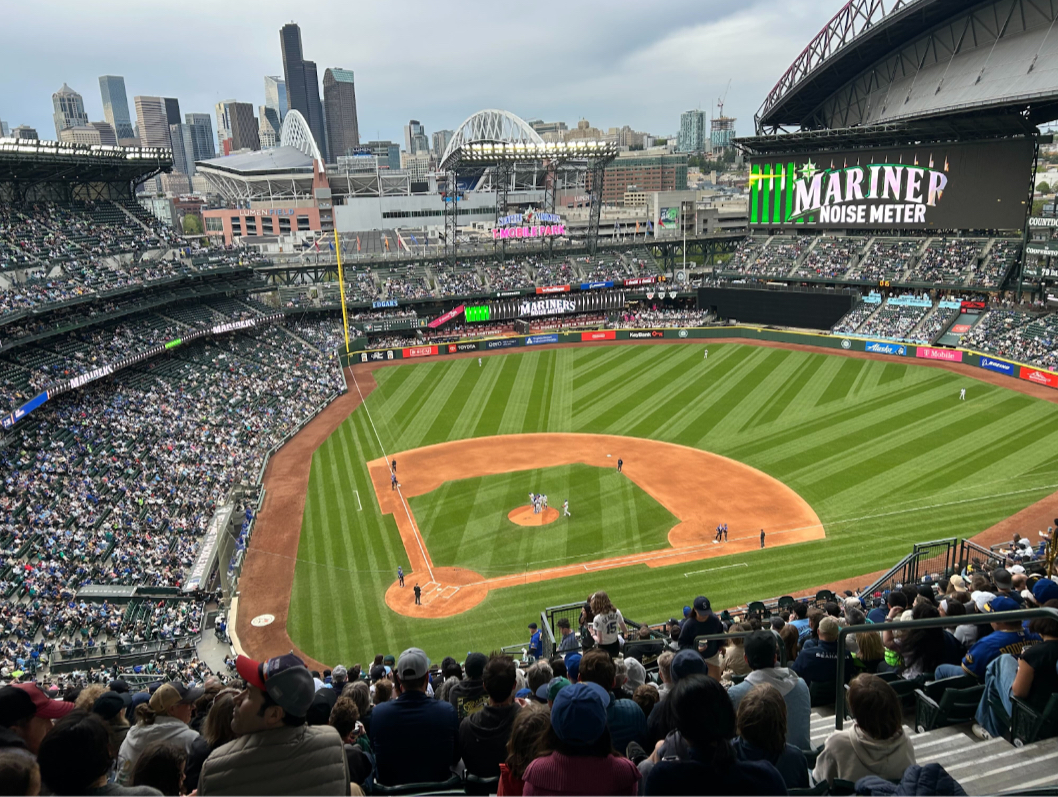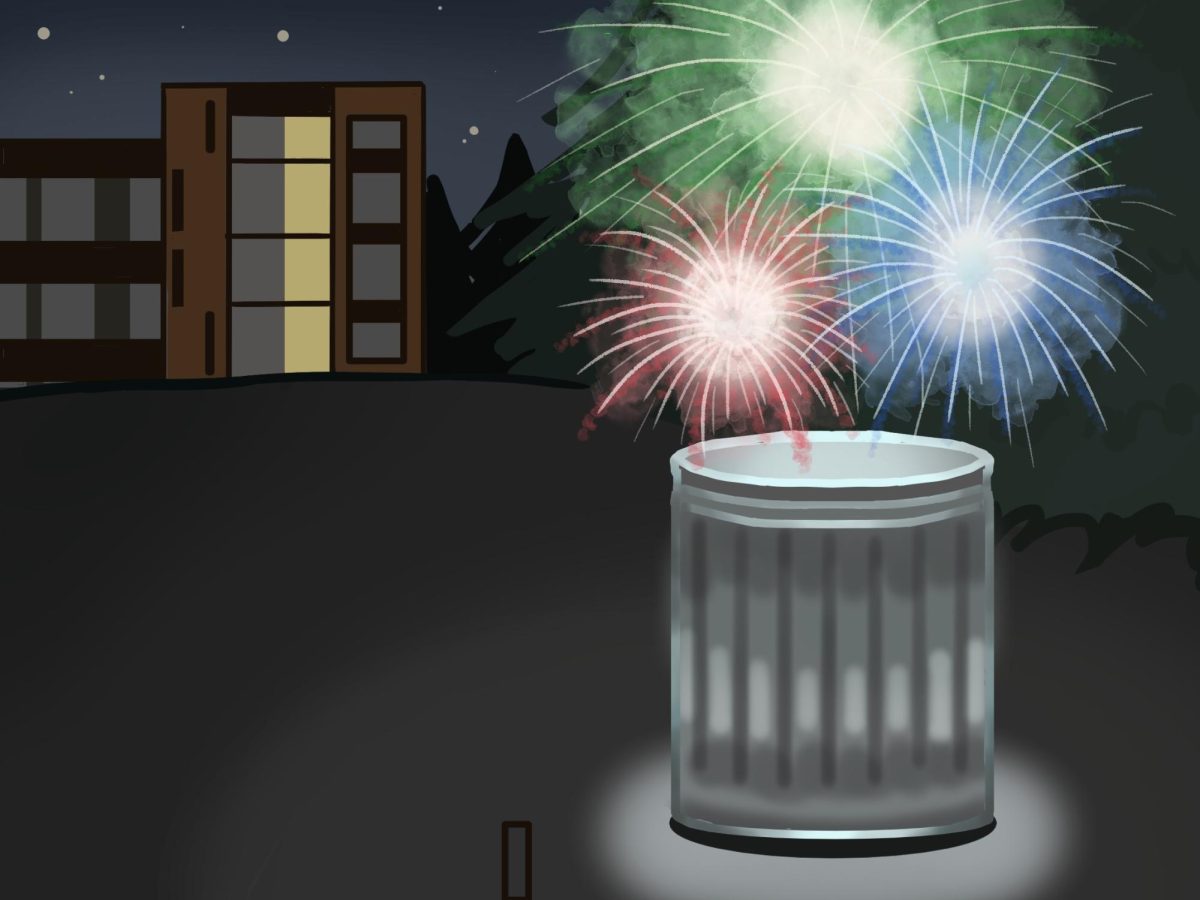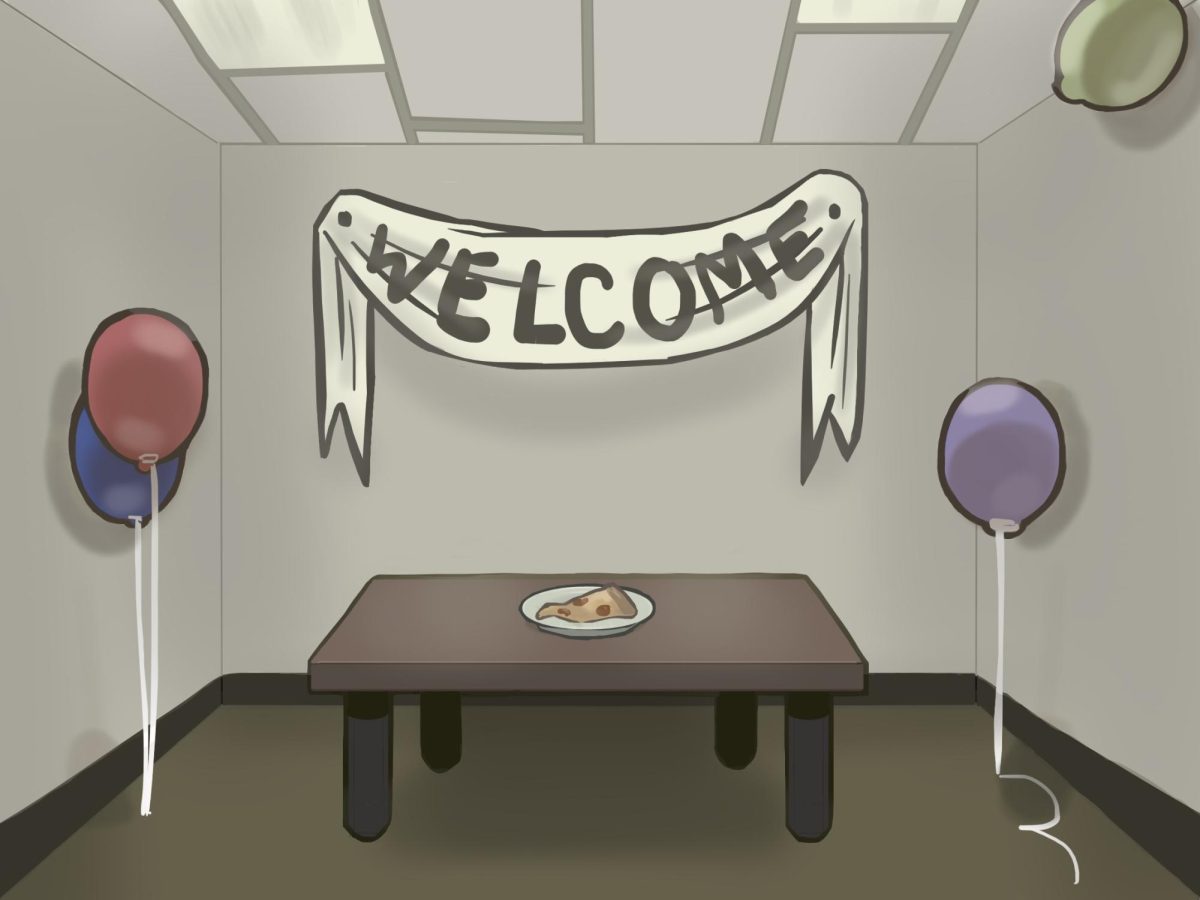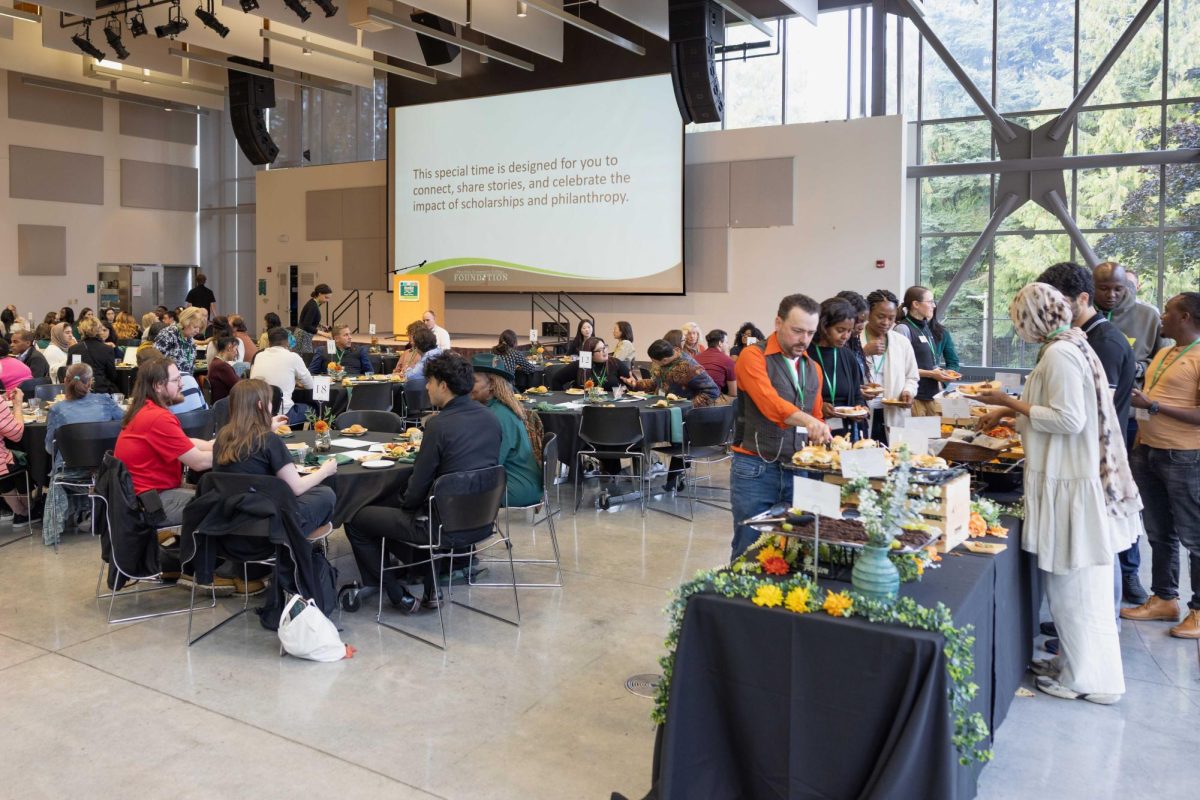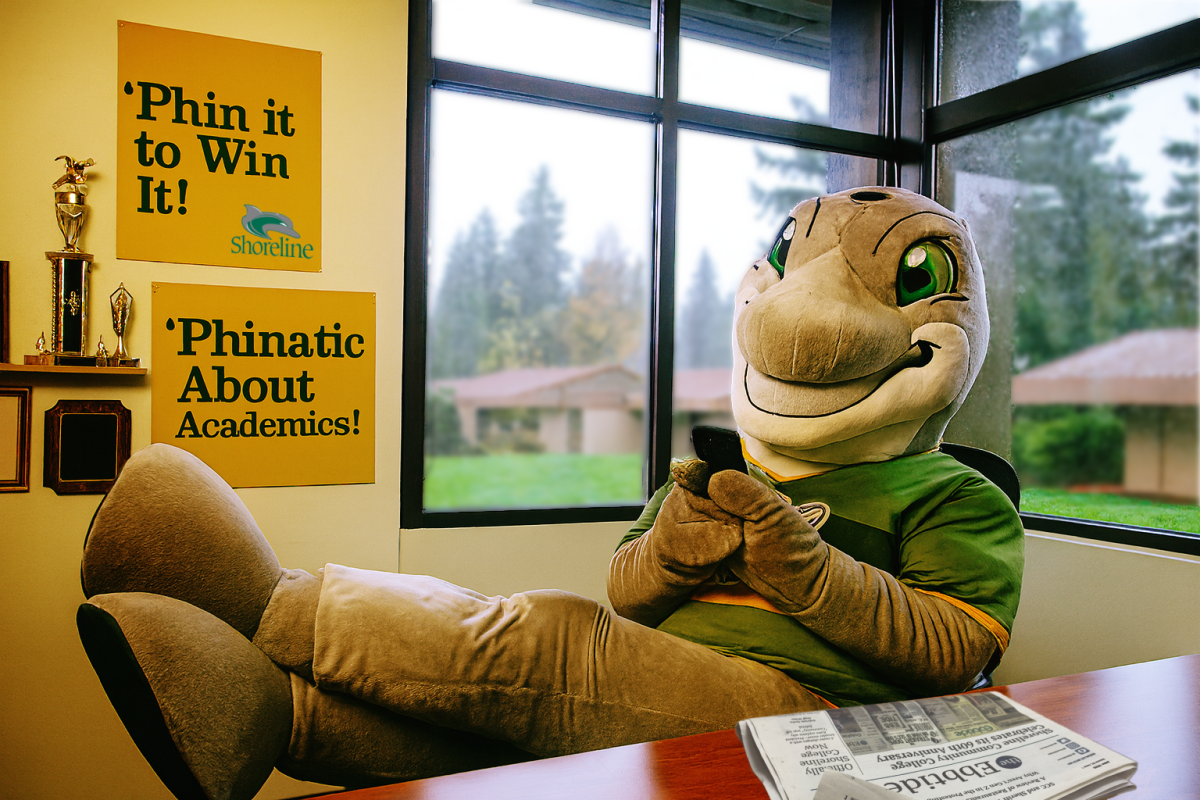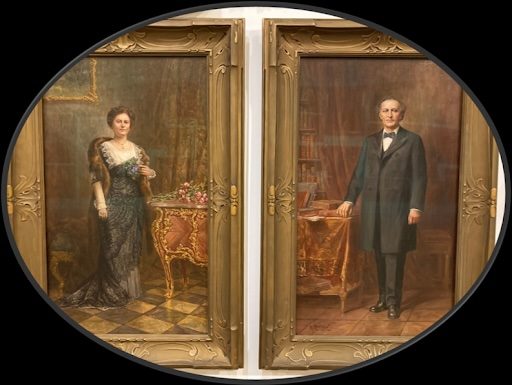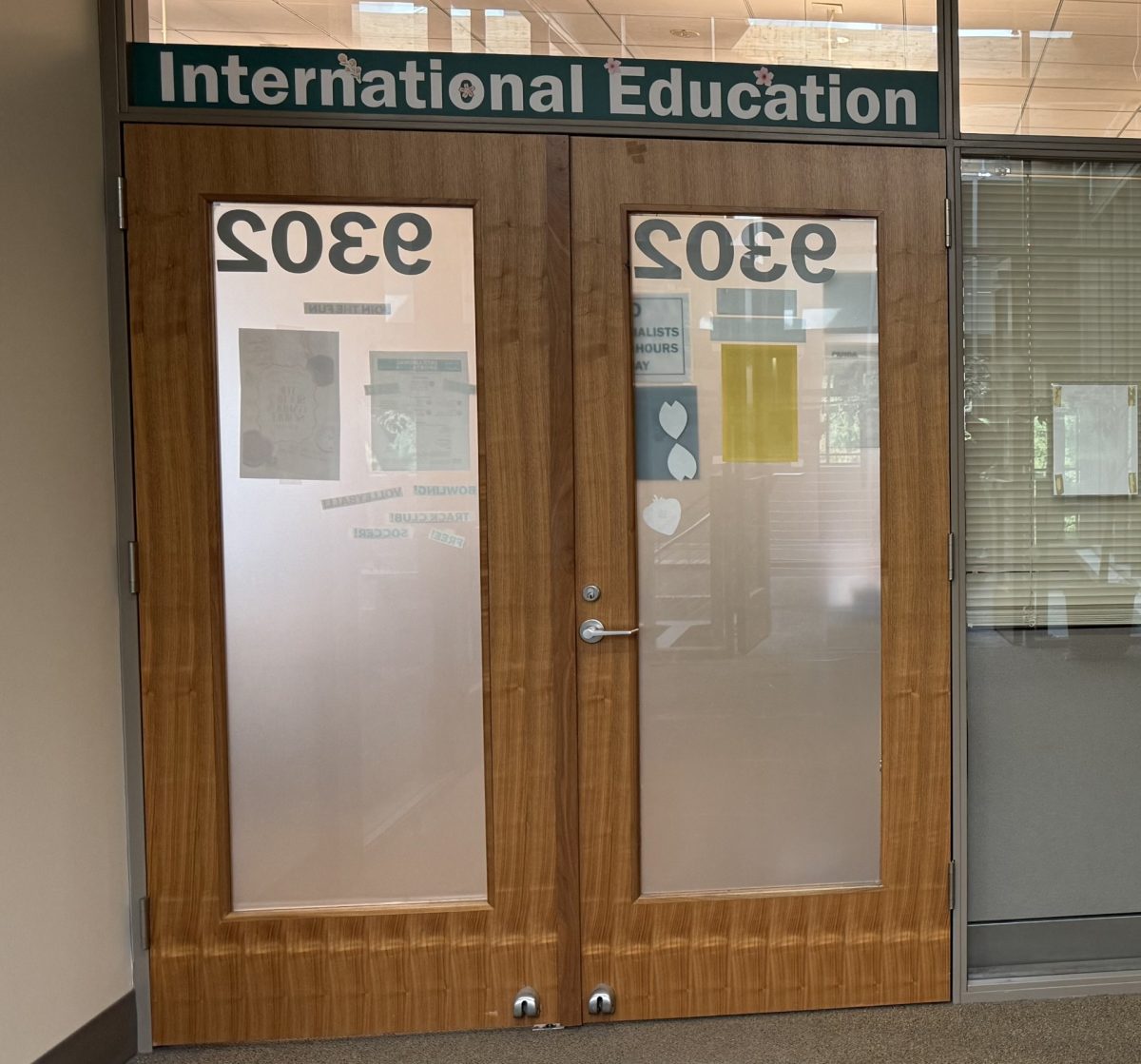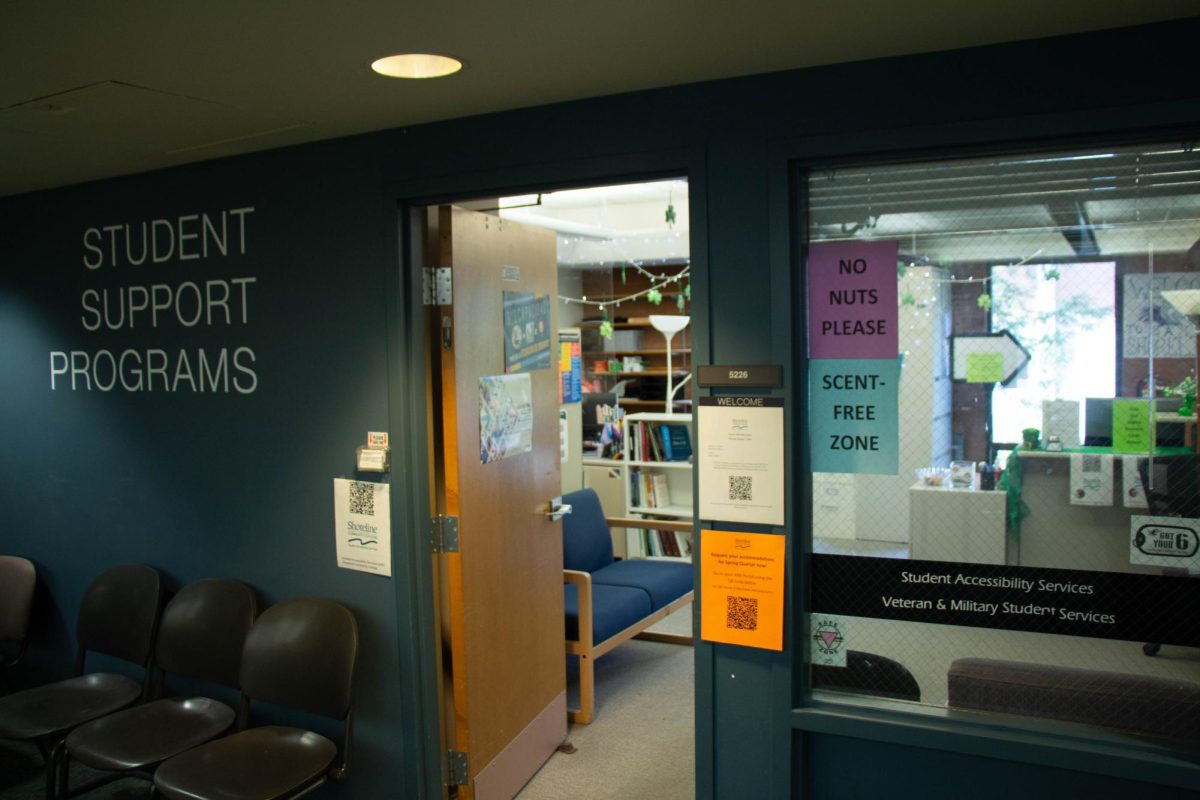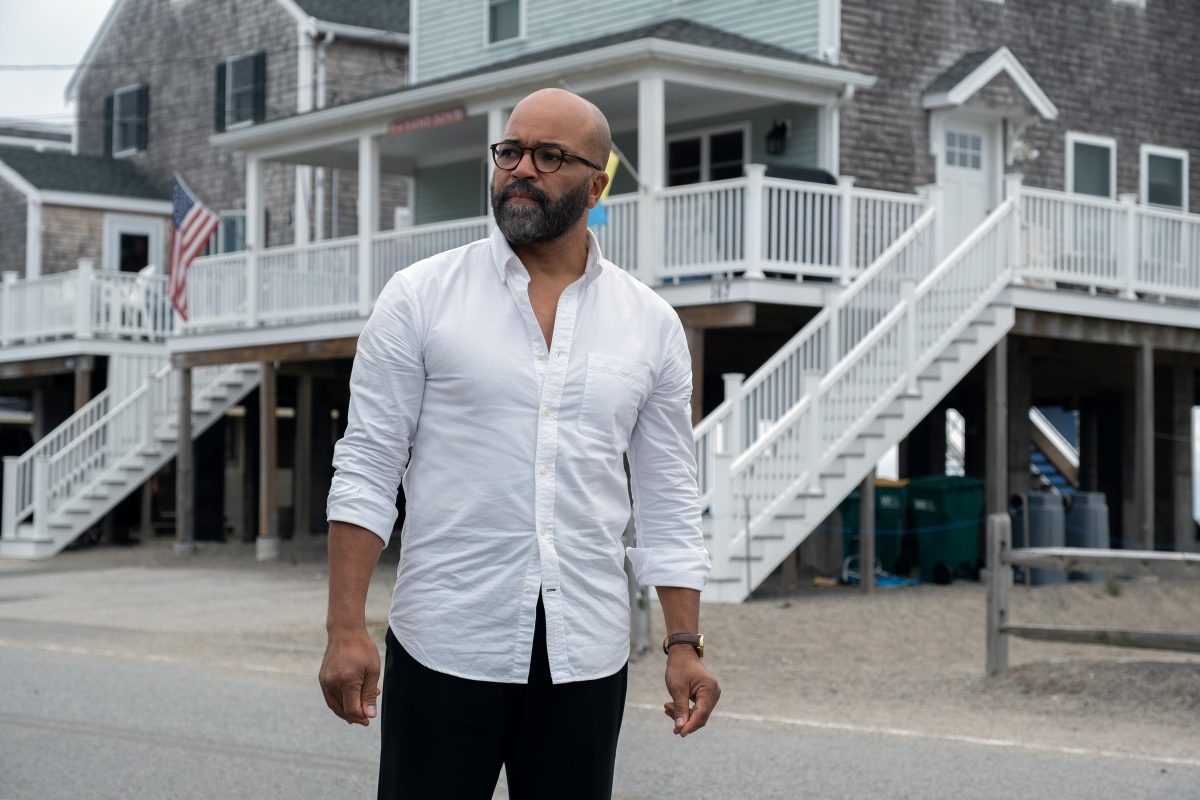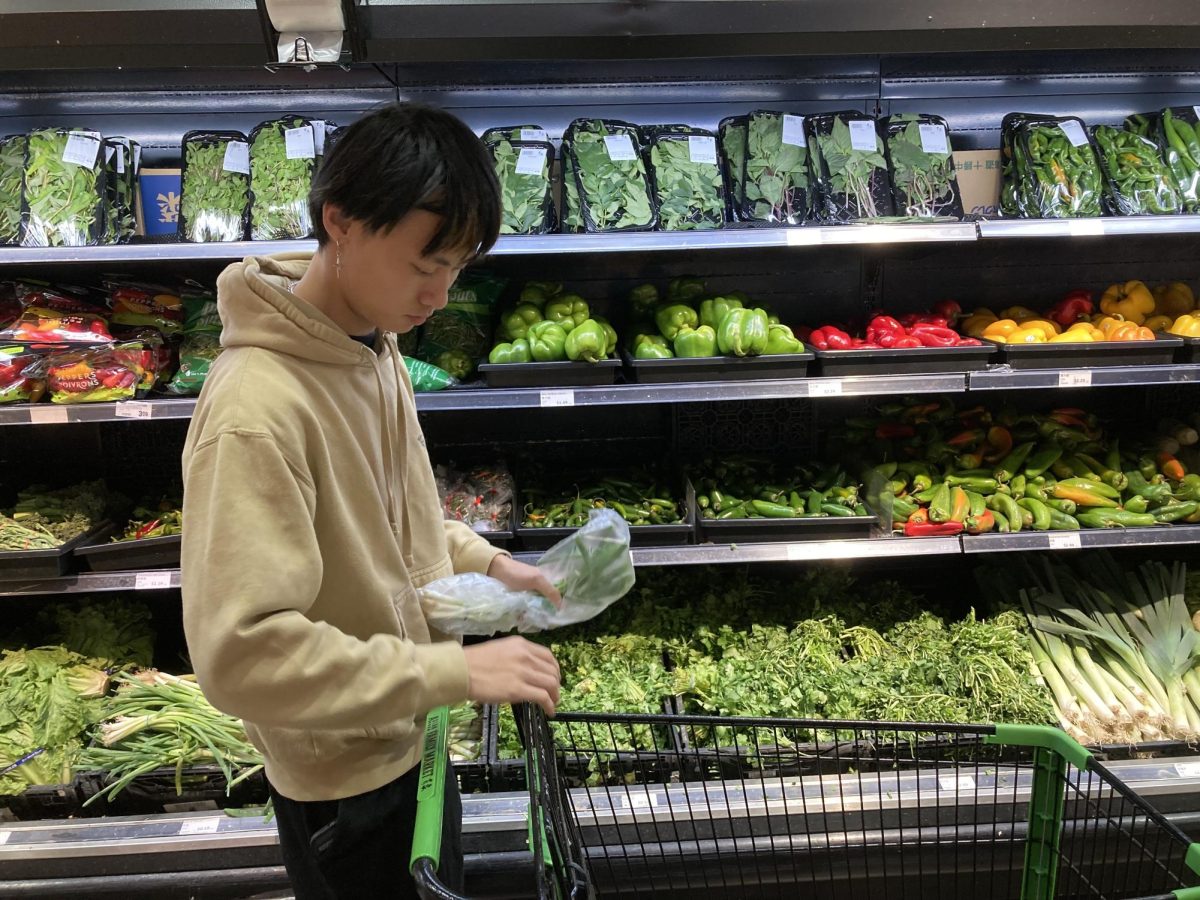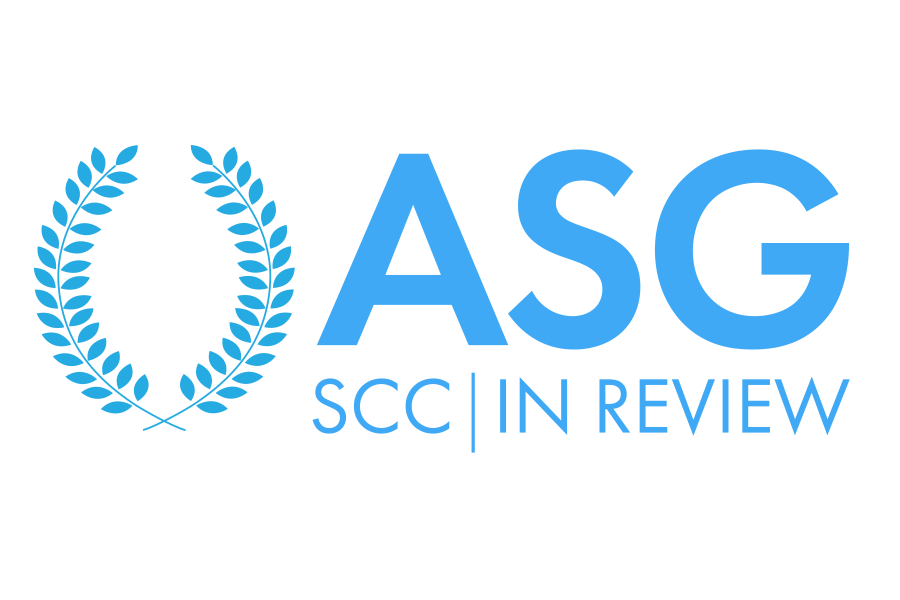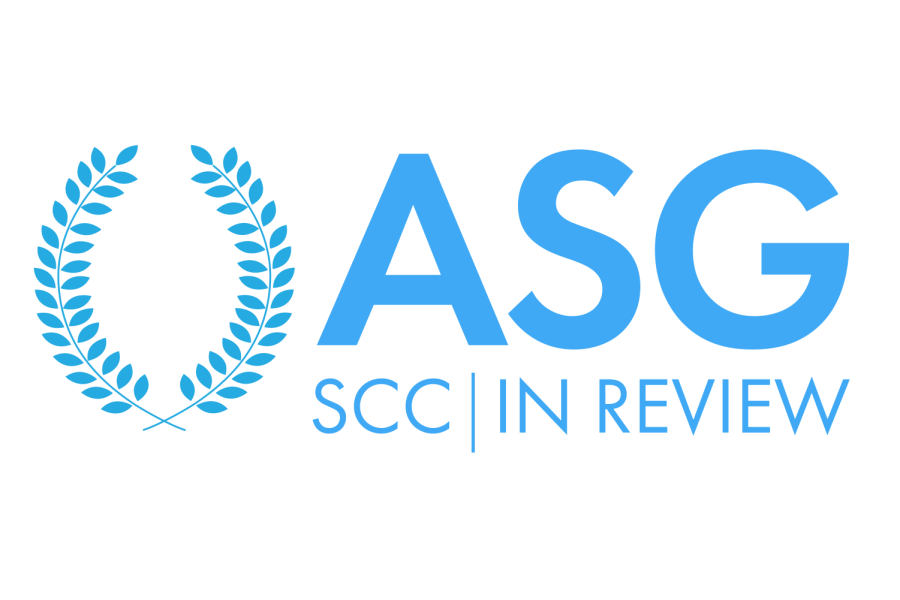There’s a new gallery in town, featuring wildly colored, abstract woodblock prints.
Artist Alex Boeschenstein “Fields of Irisarri” holds 14 solo, non-reproducible woodblock pieces available for students and faculty to view in the Administration Building. Boeschenstein was originally from Cleveland, Ohio before becoming a Seattleite. According to Boeschenstein’s website, his artistic style weaves digital and tactile resources together. His work uses technical and informational visuals, such as maps and floor plans from a bird’s eye view. Alongside his use of intricate visual construction, Boeschenstein interweaves his own abstract, personal and political themes into his art.
f Creator Alex (right) shows a visitor his artwork. PHOTO BY: Aditya Sindhunata
Creator Alex (right) shows a visitor his artwork. PHOTO BY: Aditya Sindhunata
The Left Wall
The majority of the 14 works hang from the walls, with the first piece directly to the left of the gallery’s entrance. Each work is a woodblock print, with varying tools involved in their designs.
“Territorials” is the first piece — the start of the PVC pipe pieces in the “Fields of Irisarri.” There are three frames with varying dark hues. It has both PVC pipe and string attachements.
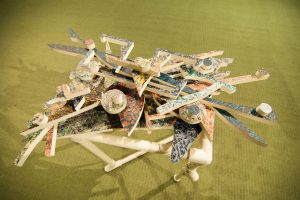
“Untitled,” by Alex Boeschenstein, constructed entirely out of MDF Board and PVC Pipe. PHOTO BY: Aditya Sindhunata
“Superimpose,” two indigo prints, sits right beside its companion, “Territorials.” The second set grants an oceanic, underwater sensation with its moody blue. In comparison to “Territorials,” its more subtle use of color gives off a more serious, solemn tone. It is larger in size, the frame being 9-inches-by-12-inches.
Further down the wall, “Carved Land 1 & 2” give twilight hues. The prints match the framework of “Superimposed” and were composed on an MDF board, a medium-density fiberboard formed by compartmentalizing hard or soft wood into wood fibers, combined with wax and a resin binder.
“Baucis 1” and “Baucis 2,” the former being the second in the gallery to work with PVC and string and the latter working with PVC and security tags, share energetic, animalistic emotion.
During Boeschenstein’s open reception on Nov. 9, he had said “Baucis 2” was his personal favorite out of all of the gallery pieces.
If anyone is familiar with painter Claude Monet’s “Sunflowers”, both “Baucis” works employ the same soft use of hazy blues and yellows.
The Right Wall
Leaving the smaller pieces on the first half of the room, viewers transition into Boeschenstein’s larger pieces.
“Impositions 1-5” match their predecessors’ use of PVC pipe and security tags, with a frame size of 16-inches-by- 24-inches. The first woodwork expresses shadowy forms and colors dancing along the tainted royal purple lines. Slender cracks of black travel through each of the pieces, almost as if there is black electricity sizzling in each of the three frames.
The second and third frames depict far warmer dark hues, as if the darkness that had spread over its first piece has started to lift. Finally, the fourth and fifth frames have become brighter, topped with vivid colors such as yellow.
Boeschenstein’ next three compositions share the gallery’s namesake. “Fields of Irisarri (Variations 1-3)”, are indeed the same exact works — each depicting completely different palettes and emotional intensity.
“Fields of Irisarri” PHOTO BY: Aditya Sindhunata
The theme of each frame becoming physically lighter in composition continues, yet the simplicity excludes “Fields of Irisarri” from their companion works. The “Fields of Irisarri” works are the smallest pieces in the gallery. Variation 1 has a soft violet hue and hangs alone. Variation 2’s ocean blue pigment bleeds into the sunflower yellow of variation 3, which is right below the second piece.
Leaning casually against the wall beside “Fields of Irisarri (Variations 1-3)” is the PVC framed work “Carved Lands.” The piece is held to the top of the PVC frame with twine tied through holes in the piece.
The baby pink, candle yellow and teal work has a camouflage pattern that gave the impression of looking at a map of mountains, rivers and forests from a bird’s eye view.
The gray-teal splotches of color were the mountain ranges, while the slender yellow lines slithered through the crevices, and the pink forests stood through it all.
Finally, the conclusion of Boeschentien’s gallery holds no more names. The next four pieces are “Untitled” and are constructed entirely with MDF and PVC materials.
Just like “Carved Lands,” the first two untitled pieces are attached with twine to PVC pipe frames. The first work follows the same pattern of contrasting frames seen in “Fields of Irisarri (Variations 2-3)” — dark color trickling into lighter pigments.
In the center of the room are two structures cut into key-like shapes that are stacked in a reckless pile. Most of the pieces are varying shades of oranges, reds and blues. The shapes are abstract and haphazardly placed, and they give off the impression of a colorful wood pile.
Taking A Look
“Fields of Irisarri” leaves the audience with curiosity and a sense of mystery. Boeschenstein left viewers to deduce what they may from his new gallery, providing consistent themes such as color schemes and frame placement. The artist purposefully leaves out thorough explanation of any of the works, putting ourselves on the path through the field of wood and pipe.
The gallery will remain open 9 a.m.-5 p.m, Monday-Friday, until Dec. 15 in the 1000 (Administration) Building.


